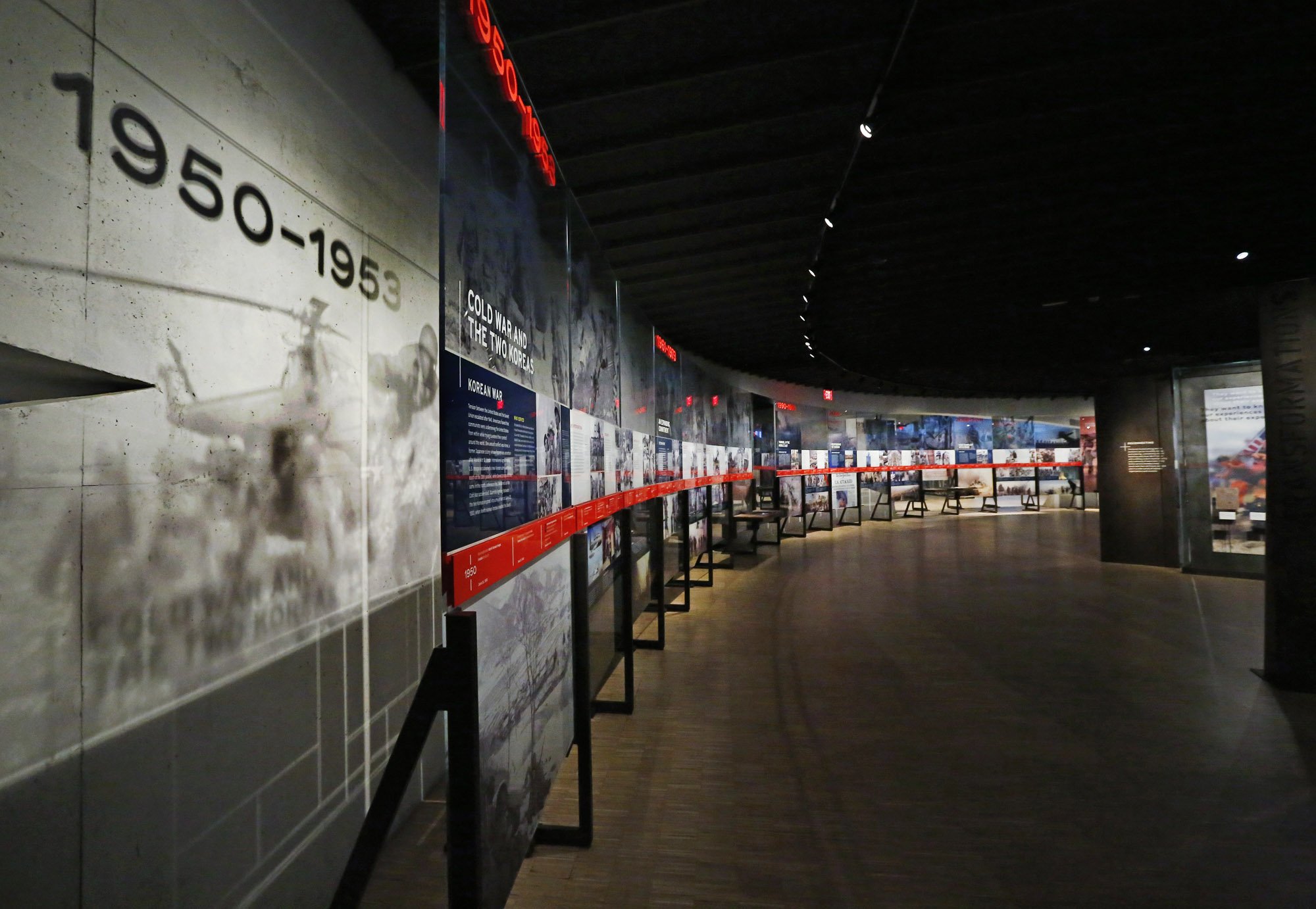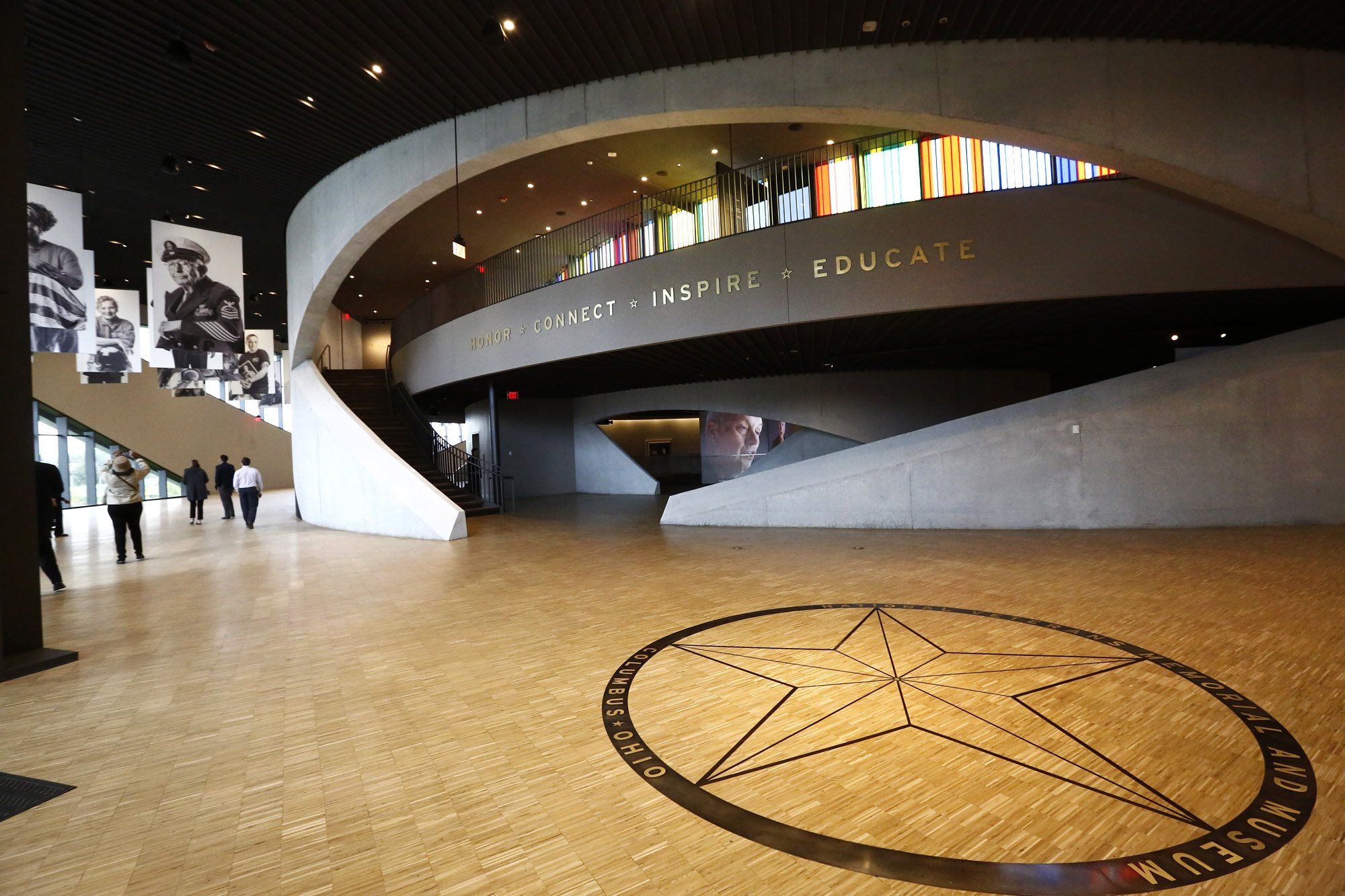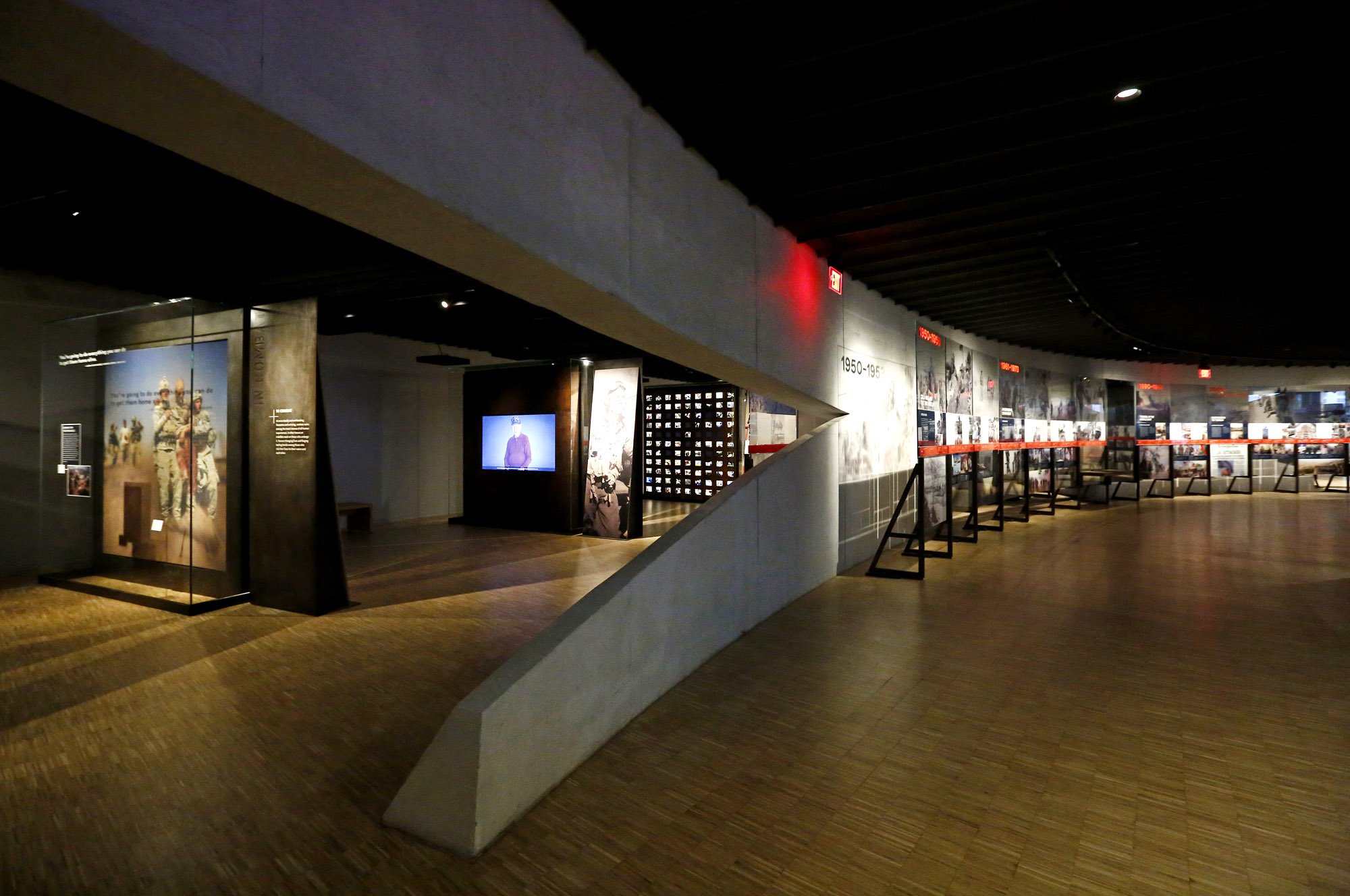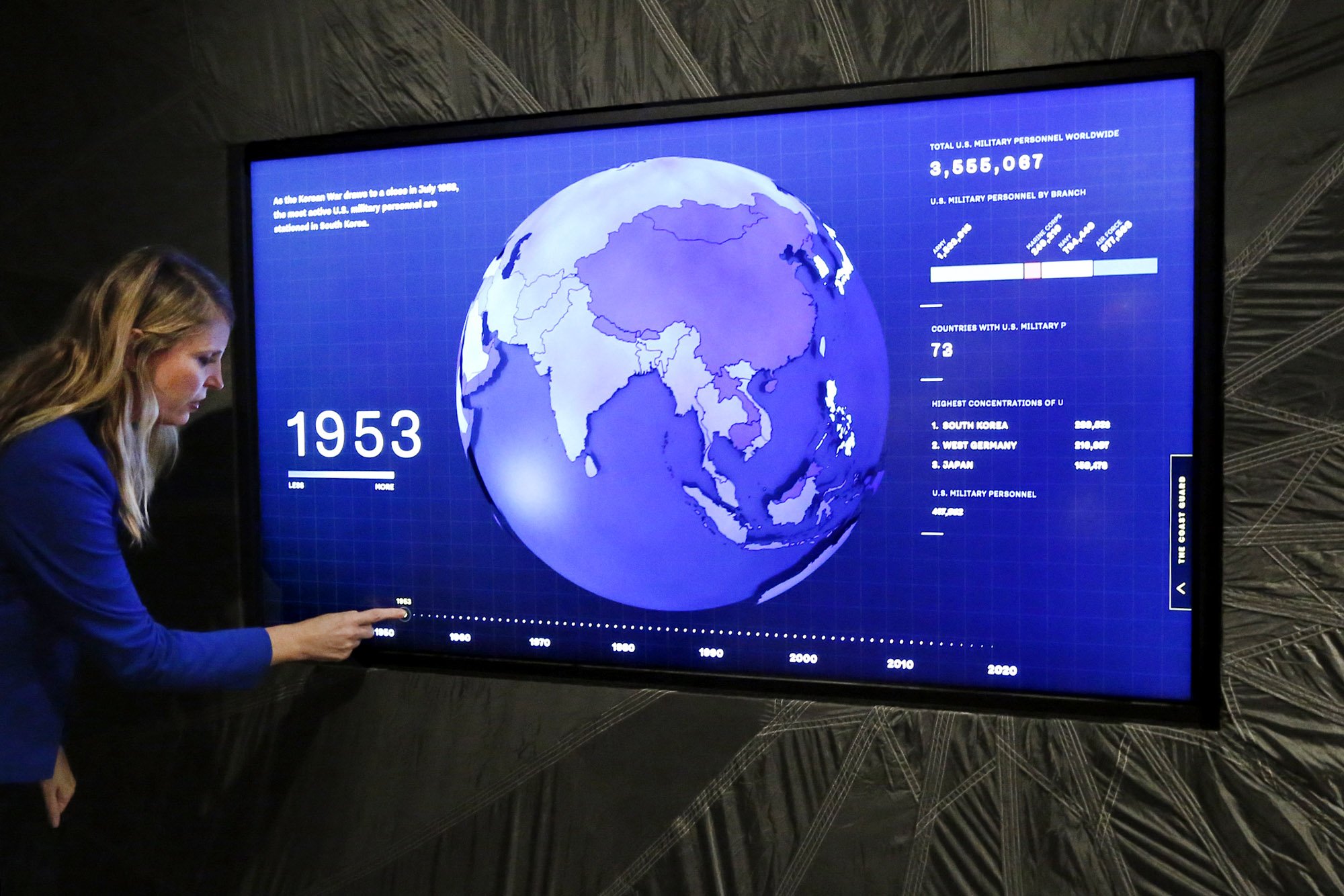
Through collaboration, message of selfless service to extend beyond museum's walls
When student groups visit the National Veterans Memorial and Museum, their school buses will unload at a private entrance built just for them.
The kids will drop their belongings in a wall of wooden cubbyholes and head off to learn about American heroes past and present.
They'll peruse a timeline of American history, created with input from educators and aligned with history curriculum already taught in many schools. They'll interact with exhibits — at one, they can try on drill sergeant hats and helmets and lug rucksacks — and browse artifacts spanning decades of wars.
But the educational experience won't have to begin or end in the building.
"Whether you're in Tampa, (Florida), or Tacoma, Washington, I want you to be able to bring your kids to my museum," said retired Army Lt. Gen. Michael Ferriter, the president and CEO of the National Veterans Memorial and Museum.
"We want to educate all our youth about selfless service."
Many plans that will make that dream a reality won't be finished until after the museum at 300 W. Broad St. opens Saturday.
That doesn't mean Ferriter is short on ideas.
He's already been speaking with companies interested in creating curriculum for the museum's student visitors, including activities for before and after visits that teachers can use in the classroom.
The hope is to offer an educational online curriculum as well, to be accompanied by an interactive, virtual tour experience, Ferriter said.
The museum is also seeking a curator of education and public programming, according to a job posting from early October.

The museum's lessons will go beyond the K-12 experience, as well.
Trevor Brown, dean of Ohio State University's John Glenn College of Public Affairs, said he expects to collaborate with the museum on coursework, leadership programming and internships, especially for veterans looking to further their education.
One concept Ferriter is exploring is a leadership symposium with a representative from every state, he said.
An advisory committee is working through how to connect it all to learning standards for history and social studies at various grade levels. The group includes retired Col. Paul Craft, superintendent of Delaware City Schools, who spent 31 years in the Ohio Army National Guard.
He expects the collection will continue to grow and improve over time, including online, because every veteran who visits could have a valuable story to share as an oral history.
"Like any good museum, the opening is just the start," Craft said.
The museum isn't short on local partners, either.
Its close proximity to COSI, located across West Broad Street, will offer many opportunities for collaboration, President and CEO Frederic Bertley said.
On the museum's opening day, COSI will showcase military machines, including a Humvee and troop carrier staffed by the Ohio National Guard. The science center is also installing a permanent map of Ohio highlighting veterans who are also scientists, engineers and doctors, Bertley said.
It welcomed 82,100 people of all ages for educational field trips last year.
"Downstream, the goal is to talk about a combined curriculum that would lend itself to groups visiting both places," Bertley said.

The collaboration is a fitting way to honor Glenn, Brown said.
The late astronaut and U.S. senator from Ohio is largely credited with making the 53,000-square-foot, $82 million national museum a reality. He was passionate about public service and education, inspired by the values he learned in a high school civics class in New Concord.
Those values led him to enlist in the Marine Corps during World War II.
"As he reflected back on his career and all the tremendous accomplishments he had, he ultimately didn't think of himself as a senator or as an astronaut, he thought about himself as a Marine," Brown said.
The personal experiences that transform civilians into veterans are an emphasis of the museum's collection.
That approach is especially helpful when a topic, such as wartime, may be difficult to discuss or challenging to convey in a classroom, said Rebekah Harding, who oversees educational outreach for the Ronald Reagan Presidential Library and Museum in Simi Valley, California.
"Part of the beauty of a museum, for students, is it really allows them to connect with the material," Harding said.
Technology has the potential to amplify that impact, Harding said.
For example, some day teachers could layer firsthand accounts from veterans into their lesson plans, using videos from the museum that correspond with conflicts throughout history, she said.
"I had a mentor who once said, 'Museums should be a safe space where students can ask unsafe questions,' and I think that's really where museum education is moving," Harding said.
"It's where we can gather, talk about the substantive issues going on in our country and try to gain understanding."
